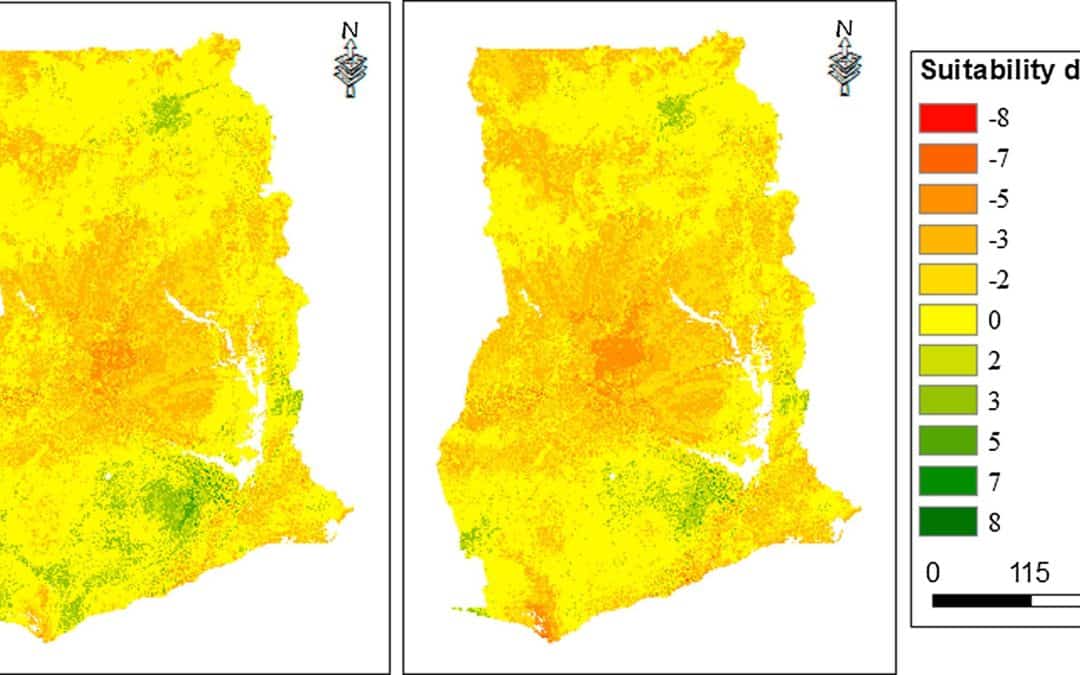Mapping Irrigation Suitability under Climate Change in Ghana
Abstract
Estimating the potential land resources suitable for irrigation and evaluating the possible impact of climate change on land suitability is essential for planning a sustainable agricultural system. This study applied a GIS-based Multi-Criteria Evaluation (MCE) technique to evaluate the suitability of land for irrigation in Ghana for a baseline period (1990 to 2010) and future time horizons 2050s (2041 to 2060) and 2070s (2061 to 2080). Key factors considered to evaluate the suitability of the land for irrigation include biophysical features (such as climate, land use, soil, and slope) and socioeconomic factors (such as proximity to roads and population density). These factors were weighted using a pairwise comparison matrix then reclassified and overlaid on a 30 m grid to estimate the irrigation potential of the country. Groundwater data from the British Geological Survey (BGS) were superimposed onto the land suitability map layer to evaluate the irrigation potential and the accessibility of shallow groundwater with simple water lifting technologies. Downscaled and bias-corrected future climate data from HadGEM2-ES under Representative Concentration Pathways (RCP) 4.5 emission scenario were used to represent the future climate horizon. Due to climate change, on average, rainfall will increase by 15 mm and 20 mm from the baseline period in the 2050s and 2070s, respectively. The average temperature shows a consistent increase in the majority of Ghana and a higher rate of increase is expected in the 2070s. Consequently, the rising temperature will increase the potential evapotranspiration by 6.0% and 7.6% in the 2050s and 2070s, respectively. The suitability analysis indicates that approximately 9% of the country is suitable for surface irrigation under the baseline period. A large portion of the potential land is located in the southwestern part of the country. The potential suitable land has an average groundwater access of 12 m from the surface with an average borehole potential yield of 2.5 L/second, which makes it favorable for utilization of simple water lifting technologies. Due to climate change, 9.5% of the suitable land will become unfavorable for irrigation in 2050s, and it is expected to reach 17% in 2070s.
Worqlul, A.W., Dile, Y.T., Jeong, J., Adimassu, Z., Lefore, N., Gerik, T., Srinivasan, R. and Clarke, N., 2019. Effect of climate change on land suitability for surface irrigation and irrigation potential of the shallow groundwater in Ghana. Computers and Electronics in Agriculture, 157, pp.110-125.
May 30, 2019
CGIAR-CSI





